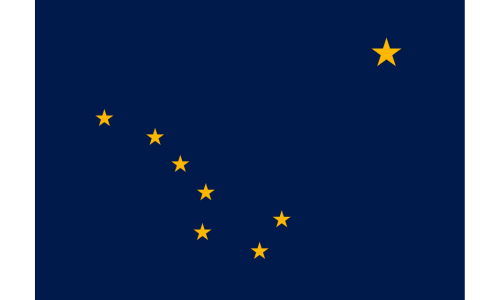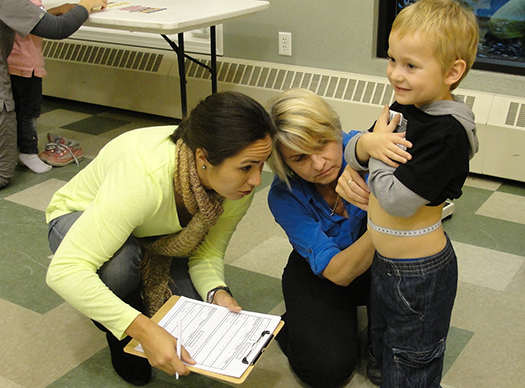
ALASKA
Population
Total: 733,391 (2020 Decennial Census)
Age Structure: 0-14 years: 25.2%, 15-64 years: 69.2%, 65 years and over: 5.7% (June 5, 2020 est.)
Population by gender: male 51.7%, female 48.3% (June 5, 2020 est.)
Urban population: 64.9% of total population (2020)
Total fertility rate: 1.89 (2020)
Diabetes rate: 7.4% adults aged 18+ years (2020)
Sanitation facility access: Over 3,300 rural Alaska homes lack running water and a flush toilet. Most of these homes are located in 32 “unserved” villages. In addition to that, many homes and villages with service depend on aging and deteriorating piped and haul systems. An unserved community is one where 45% or more homes have not been served either via pipe, septic tank & well, or covered haul system. Of the more than 200 communities in rural Alaska, the 32 unserved communities are located mainly in western Alaska and along the Yukon River and its tributaries. The number of occupied houses in the unserved communities ranges from 12 to 193. An average of 4 people live in each household. 36 villages use community washeterias and central watering points to wash clothes, bathe, and collect treated drinking water. All unserved communities are outside of CHL’s study area.
Drinking water source: Groundwater is a source of drinking water for about 50 percent of Alaska’s population, and 90 percent of the state’s rural residents. Eighty-three percent of Alaska’s 1,602 public drinking water systems use a groundwater source. The total groundwater withdrawn for these public water systems represents only 37 percent of total freshwater used by public water systems. This is due to a small number of public water systems (e.g., Anchorage, Juneau, Ketchikan,) serving a large number of people from surface water sources. Ninety percent of the private drinking water supplies are groundwater. There are 1,765 sources of drinking water that serve 1,602 public drinking water systems (PWS) in the State of Alaska. Of these PWS, 689 are classified as Community and Non-Transient, Non-Community and 913 are classified as Transient, Non-Community water systems.

Ethnicity: Caucasian (69.3%), Alaska Native/Native American, (15.6%), Asian (4%), African American (3.5%) (June 5, 2020 est.)
Languages: English (85.7%), Language other than English (14.3%) including Spanish (2.9%), Indo- European (2.2%), Asian language (3.8%) (June 5, 2020 est.)
Literacy: 91% (2003)
Economy
Real GDP: $50,869,000 in 2012 chained dollars (2021)
GDP per capita: $71,996 (real, measured, 2018)
Top five state industries as percent of total GDP: Government and government enterprises 20.6%; mining, quarrying, and oil and gas extraction 14.0%; transportation and warehousing 13.6%; finance, insurance, real estate, rental, and leasing 12.3%; educational services, health care, and social assistance 8.7%; all others 30.7%
Unemployment rate: 4.3% (U.S. BLS 2023 seasonally adjusted, December 2022)
Top labor force occupations 2021: Office and Administrative Support (13.1%), Transportation and Material Moving (9.1%), Food Preparation and Serving Related (7.9%), and Management (7.7%). Top industry employment 2020: Educational, health, and social services (21.7%), Retail trade (11.6%), and Public administration (10.7%). The seafood processing industry is the largest manufacturing sector in Alaska. Seafood is the largest international export (by volume and value); $4.7 billion in seafood product was processed in 2019. Two-thirds of the seafood in the nation is Alaska-harvest.
Poverty: 10.5% (2021 ACS 1-Year Estimates)
WIC: $51.17 average monthly benefit per person (preliminary FY2022)
Agricultural products: feeds and other feed giants and grain products (barley, hay, haylage, alfalfa), livestock (beef, veal, other livestock products), potatoes, other plant products, wood products, seafood. Subsistence and personal use harvests are worth $900 million annually.
Top industries: Oil and gas, tourism, fishing, timber, mining, agriculture, military. 85% of the state’s budget is from oil revenue.
Exports: $4.8 billion (2018); petroleum and coal products ($201 million), transportation equipment ($68 million), food and kindred products ($23 million), computer and electronic products ($23 million), and machinery excluding electrical ($23 million). Alaska exports $2 billion in food dollars per year. 2.2 billion pounds of seafood was exported in 2019, resulting in $3 billion from foreign buyers.
Imports: $3.75 billion (2022); light petroleum distillates ($1.89 billion), parts and accessories of data processing ($413 million), communication apparatus ($156 million), petroleum spirit for motor vehicles ($134 million, and copper ore and concentrates ($122 million). Alaska imports 95% of its food.
Transportation
Roads, trails including winter trails, railroad, bus, marine transport (ocean ferry service, river barge), air transport, dogsled, snow machine, all-terrain vehicle (ATV)
Geography
Land: 571,022.38 sq miles
Natural Resource: oil, natural gas, coal, copper, lead, zinc, silver, gold, lumber, fish, jade, sand/gravel/crushed stone
Agricultural Land use: .2% of land acres used as land in farms (849,753 acres), including cropland, permanent pasture and rangeland, woodland, and land in buildings (2017)
Climate: Average winter temperatures dip to a low of -20 to -30 degrees Fahrenheit in the Interior of the state while average maximum summer temperatures are 70 to 90 degrees Fahrenheit. Climate varies greatly depending on location, e.g., maritime zones experience more moderate temperature ranges.
Environmental – current issues: Climate change/hazardous environmental events/extreme weather (permafrost degradation, coastal and riverine flooding, erosion, drought, wildfire, loss of sea ice extent, river ice break-up), salmon habitat and clean water, renewable and non-renewable natural resource extraction/oil, gas, and mining economy
